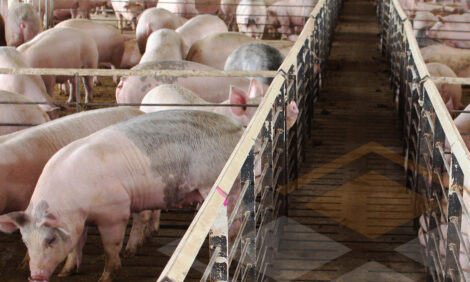



US Breeding Herd Crawls along the Bottom (April 2011)
By Chris Harris, Editor-in-Chief of ThePigSite. Our snapshot of the ongoing global pig industry trends as reported in April 2011 Whole Hog Brief. To read the full detailed analysis, including all the commentary and graphical data, subscribe to the publication.The decline in the US pig and hog inventory appears to have ended as the sector's rationalisation seems to have come to an end, according to the latest issue of Whole Hog.
Both the hogs inventory and the breeding herd showed slight increases a in the March inventory.
The numbers of all hogs and pigs stood at 63.96 million and the breeding herd was reported to be 5.79 million.
The Whole Hog reports that the annual report of the Danish Pig Research Centre shows that the top 25 per cent of the breeding herds in Denmark are hitting very high targets, with the sows eating less, having higher litter numbers than most and higher numbers of piglets weaned.
The report shows that the Danish sow herd has increased productivity since 2003 and is now producing 27.6 piglets per sow per year on average.
In a report on the Chinese industry, the Whole Hog says that with a herd of around 670 million producing 50 million tonnes of pork a year, the Chinese industry is by far the largest in the world.
The report shows that the industry has been hit by a reduction in subsidies last year and outbreaks of foot and mouth disease (FMD) and PRRS.
However, the sector is marked by the contraction of backyard production and the expansion of commercial industrialised production.

Price Cycle Passes Peak
As the Whole Hog predicted last month, the global pig price cycle passed the 2005 peak.
The cycle is now reflecting prices that were last seen in 2001/2002 and the Whole Hog says there is no sign of the rise stopping and it is forecasting that it could reach the highs of 1997 that ere driven by swine vesicular disease in the Netherlands and FMD in Taiwan.
Easter and better weather has produced higher prices for the European sector.
Both France and Denmark have seen a 13.9 per cent rise in prices, Spanish prices are up by more than 12 per cent and Irish and Dutch prices up more than 11 per cent.
Out of the Euro-zone, prices in Poland and Slovenia have also leapt by more than 11 per cent.
Only UK prices have shown a dip.
Polish Export Trade Shows Strong Growth
The Whole Hog says that Polish export rose by 64 per cent in volume last year compared to 2009.
The main reason for this was a large increase in sales to Belarus, which imported 48,281 tonnes of pork and ham.
Exports have also risen to Hungary and the Czech Republic.
For Canada, however, the Whole Hog shows that exports have started to slow.
Trade in January this year was down by six per cent on last year and the live hog trade has also started to ease up.
But for the US, the Whole Hog says that 2011 has started with a bang for exports to Japan and South Korea.
Total export sales rose by 11 per cent in January compared to 2010, with sales to Japan up by 28 per cent and to Korea up by 128 per cent.
Turnround Evident in Australia
The trend for a falling imports and a rise in exports in the Australian pig meat sector is continuing.
The gap, while still wide, is narrowing between imports and exports, according to the Whole Hog.
With domestic production rising by 4.5 per cent, exports rose by 4.1 per cent, the Whole Hog says.
The Japanese market is showing strong demand for imported pig meat, with the three major exporters – US, Denmark and Canada – all showing significant gains in the market.
Overall, Japan imported 7.1 per cent more last year than the previous year.
The FMD outbreak in South Korea has produced a boom time for imports.
In February, demand for imported pig meat rose by 31 per cent, the Whole Hog reports, and imports from the US rose by 90 per cent on last year.
April 2011






